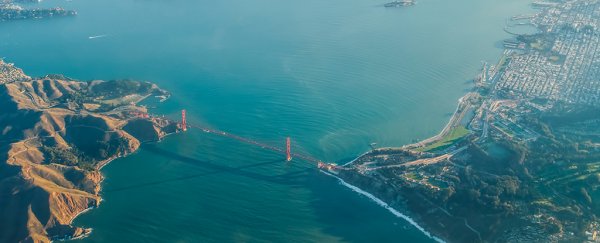Scientists have identified a new and potentially devastating tsunami risk in certain areas of the world, linked to undersea strike-slip faults in the Earth's crust – where blocks of rock along a fault line slide horizontally past one another.
Up until now, it was thought that earthquakes at strike-slip faults could only generate major tsunamis if they also triggered underwater landslides – but through some detailed modeling and with the help of the Blue Waters supercomputer, scientists have shown the risk is much greater.
In fact, the lateral movement and generated energy at strike-slip faults can produce significant tsunamis all of their own, the findings show. It's a little bit like shaking a cup of water from side to side, the researchers say.
"The physics-based model used in this study provides critical insight about the hazard associated with strike-slip faulting," says civil engineer Mohamed Abdelmeguid from the University of Illinois at Urbana-Champaign.
"Particularly, the need to account for such risk to mitigate future damage to other bays traversed by strike-slip faults."
For the tsunami to happen, the researchers found an 'intersonic' earthquake is required: an event where the rupture happens so quickly that the movement at the fault line is faster than the seismic shear waves generated in the crust.
Coastal cities near strike-slip faults are at risk, especially when the faults traverse inland bays; the San Francisco Bay Area, Izmit Bay in Turkey, and the Gulf of Al-Aqaba in Egypt are examples. Essentially, the boundaries of these narrow bays are getting pushed and pulled.
That leads to three phases that join together: the initial movement and shockwaves, the displacement of water during the earthquake, and the movement of the resulting tsunami wave. Each phase can develop differently depending on the local conditions.
"Each of these phases will have a different effect depending on the unique geography of the surrounding land and bathymetry of the bay," says civil engineer Ahmed Elbanna.
"Unlike the earthquakes and subsequent water displacement that occur many miles offshore, an earthquake and tsunami that occurs within the narrow confines of a bay will allow for very little warning time for the coast."
The aim here is to understand more about how tsunamis are created and which parts of the planet are most at risk – so that we're better prepared for future events. Before now, this particular risk hasn't been factored into models.
The relationship between strike-slip faults and tsunamis has been looked at before, but only in specific geographical spots. Here, the researchers examined the fundamentals of these types of faults, enabling them to identify various places around the globe that could be vulnerable to this scenario.
The researchers think that the huge September 2018 tsunami that hit Palu on the Indonesian island of Sulawesi, triggered by a 7.5 magnitude earthquake, was caused by the mechanism outlined in this study.
"It looked like a bulldozer had come in and leveled the town," says civil engineer Costas Synolakis from the University of Southern California. "This is why it is so important that we try to understand what really happened."
The research has been published in PNAS.
